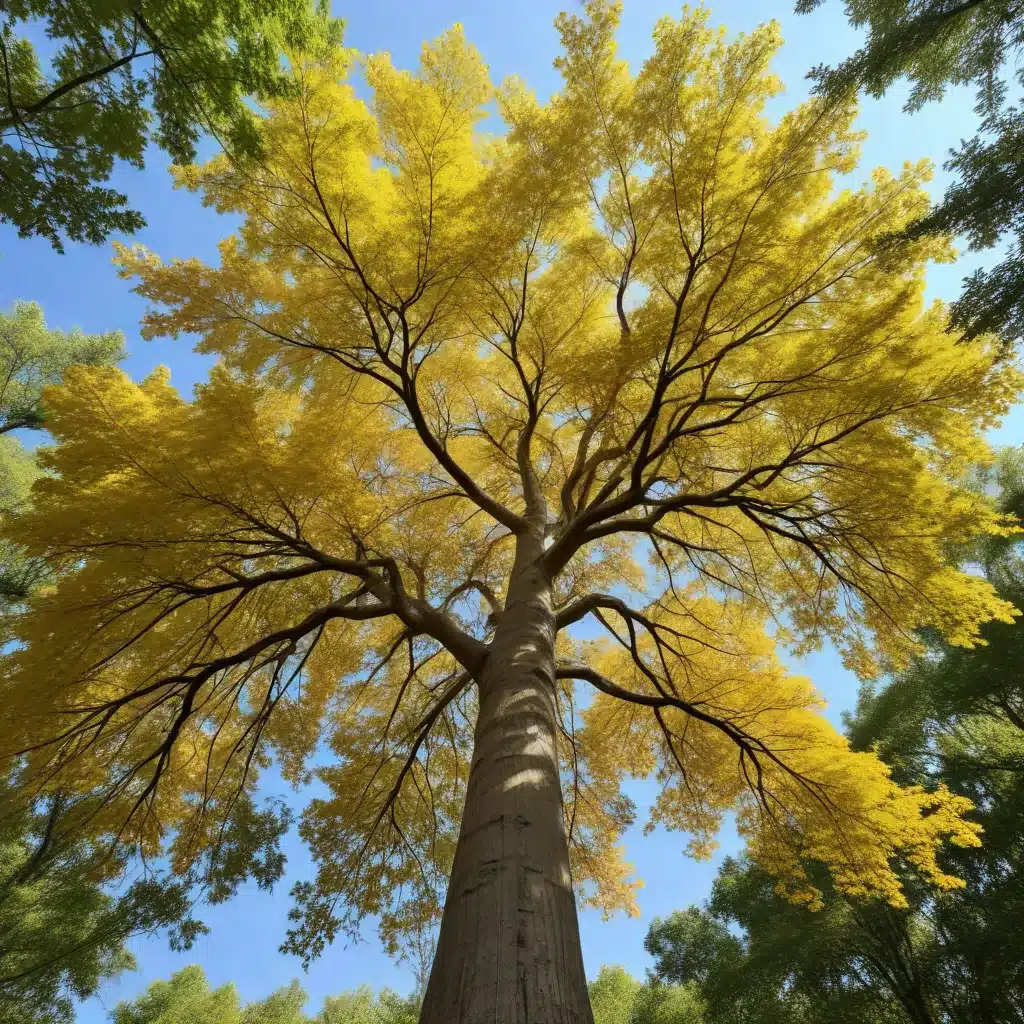
The Yellowwood tree, known botanically as Cladrastis kentukea, is a deciduous member of the legume family (Fabaceae). This species is native to the eastern United States, gracing the forests from Pennsylvania to northern Alabama. With its striking spring blooms, vibrant autumn foliage, and exceptional wood quality, the Yellowwood offers a wealth of ornamental and practical value that makes it a true delight for landscapers and arborists alike.
Physical Attributes
The Yellowwood is a medium-sized tree, typically reaching heights of 30 to 50 feet at maturity. Its trunk is characterized by a smooth, light gray bark that becomes more furrowed with age. The leaves are pinnately compound, with five to eleven ovate, pointed leaflets that emerge in a bright, soft green hue. In the fall, the foliage transforms into a brilliant golden-yellow display, adding seasonal splendor to the landscape.
Perhaps the Yellowwood’s most captivating feature is its abundant spring floral display. In late spring, the tree erupts in a profusion of fragrant, white, pea-like blossoms that cascade from the branch tips in graceful, pendulous clusters up to 12 inches long. This stunning floral show rivals the blooms of many ornamental cherry trees, making the Yellowwood a true showstopper. Following the flowers, the tree produces long, flat seedpods that mature to a light brown color.
Habitat and Distribution
The native range of the Yellowwood tree extends from Pennsylvania southward through the Appalachian Mountains to northern Alabama, with isolated populations as far west as Missouri and Arkansas. Within this region, the Yellowwood thrives in moist, well-drained soils on forest slopes and ravines, often in association with other hardwood species such as oaks, hickories, and maples.
In the wild, the Yellowwood plays a valuable role in its native ecosystems. The nectar-rich flowers attract a variety of pollinators, including bees, butterflies, and hummingbirds. The tree’s dense canopy provides essential shade and shelter for understory plants, while its deep root system helps stabilize hillsides and prevent soil erosion. The seed pods and foliage also serve as an important food source for wildlife, including birds and small mammals.
Cultural and Historical Significance
The Yellowwood has long held a place of significance in the history and culture of the eastern United States. Native American tribes, such as the Cherokee, utilized the tree’s wood for a variety of purposes, including the construction of canoes, furniture, and tool handles. The inner bark was also used to create a vibrant yellow dye, which was employed in textiles and other crafts.
During the colonial era, the Yellowwood’s exceptional timber qualities led to its widespread harvesting for use in shipbuilding, cabinetmaking, and other woodworking applications. The tree’s straight, strong, and lightweight wood was prized for its workability and durability. Even today, Yellowwood lumber remains a valuable commodity, finding use in fine furniture, musical instruments, and specialty wood projects.
In addition to its practical applications, the Yellowwood has also inspired artistic and symbolic representations. The tree’s graceful form and delicate spring blooms have been celebrated in paintings, poetry, and other creative works, earning it a place in the cultural fabric of the regions it inhabits.
Horticultural Considerations
Despite its many admirable qualities, the Yellowwood can be a somewhat challenging species to cultivate, particularly in urban and suburban settings. The tree prefers moist, well-drained, and slightly acidic soils, and it is intolerant of compacted, poorly aerated, or highly alkaline conditions. Careful site selection and soil preparation are essential for successful establishment and long-term growth.
Propagation of the Yellowwood is typically done through seed collection and sowing, as the tree does not readily transplant from the wild. Patience is required, as the seeds can take up to two years to germinate, and the young seedlings grow relatively slowly in their early years. However, with proper care and attention, the Yellowwood can be a rewarding addition to the landscape, offering its stunning spring blooms, vibrant fall colors, and unique architectural form.
In terms of landscape applications, the Yellowwood is well-suited for use as a specimen tree, complementing other native hardwoods in naturalistic settings or along the edges of wooded areas. Its moderate size and graceful habit also make it a suitable choice for larger residential properties, where it can be strategically placed to provide shade, visual interest, and habitat for local wildlife. For TriCounty Tree Care, the Yellowwood is a species that deserves renewed consideration and appreciation in the modern landscape.
Conservation and Protection
While the Yellowwood is not currently considered a threatened or endangered species, there are ongoing efforts to promote its conservation and responsible management. In some regions, the tree’s populations have declined due to factors such as land development, timber harvesting, and the introduction of non-native pests and diseases.
To help ensure the long-term survival of the Yellowwood, many state and local governments have implemented regulations and programs to protect the species. These may include restrictions on the removal or disturbance of Yellowwood trees, as well as incentives for landowners to plant and maintain them on their properties. Additionally, research and educational initiatives aim to raise awareness about the Yellowwood’s ecological and cultural value, encouraging its preservation and responsible incorporation into urban and suburban landscapes.
By understanding the unique characteristics and requirements of the Yellowwood tree, and by supporting its conservation through responsible land management and landscape design, we can help ensure that this delightful and distinctive species continues to grace the forests and gardens of the eastern United States for generations to come.


